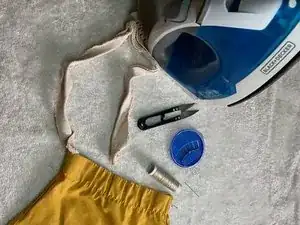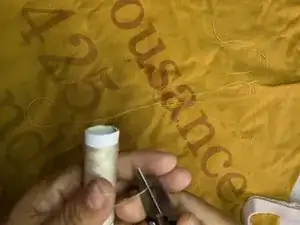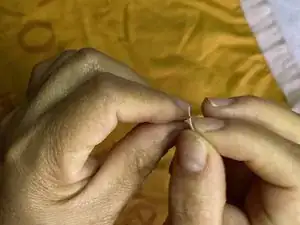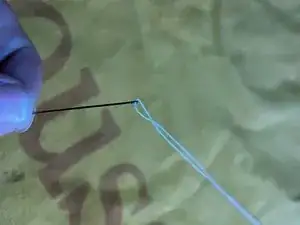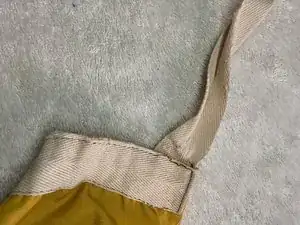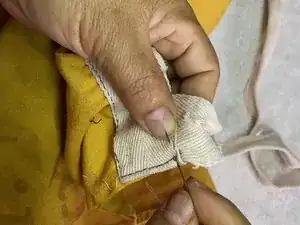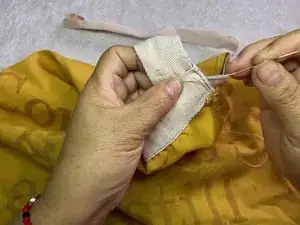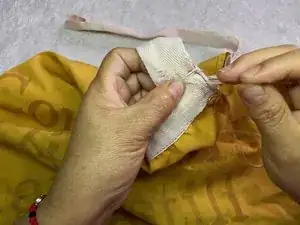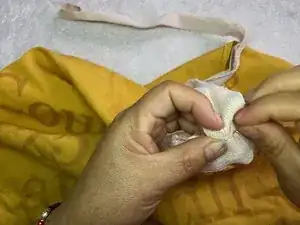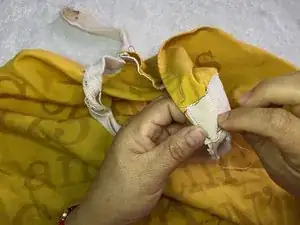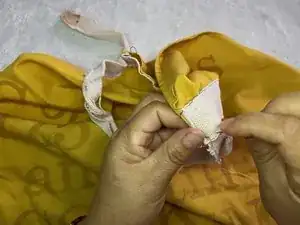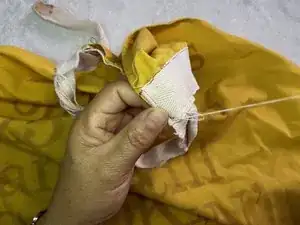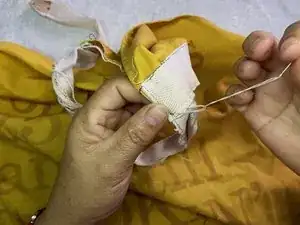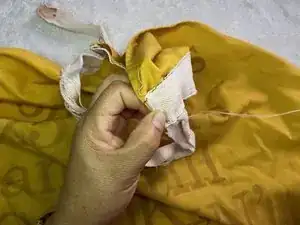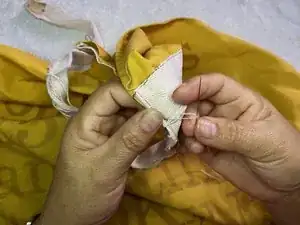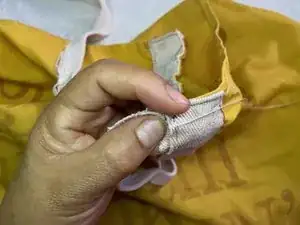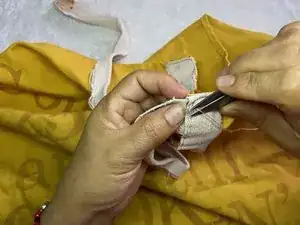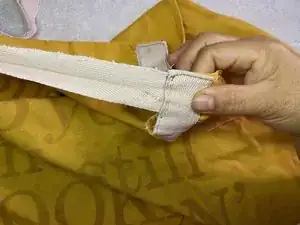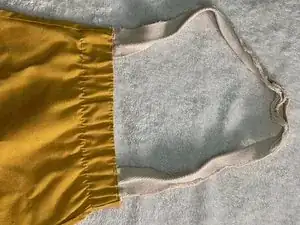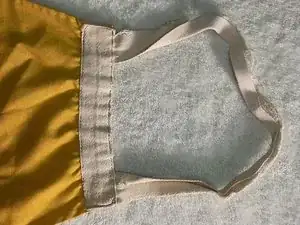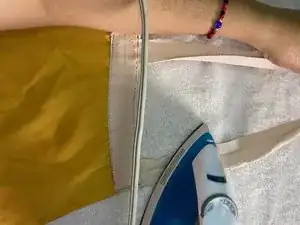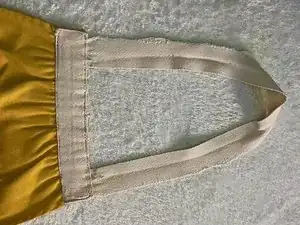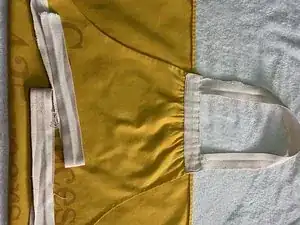Introduction
This guide will show you how to reattach a torn or broken apron strap.
A kitchen apron is used for keeping your clothes clean while cooking. It is important to do this replacement because a kitchen apron is a helpful equipment to keep yourself from getting dirty. The straps are especially important to repair because they are the main important part of holding the whole apron together.
Step 4 has a caution, might poke yourself with the sewing needle.
Before beginning make sure all your tools are available to you.
Tools
-
-
Use a thread color that matches your article of clothing (or whatever color you like).
-
Cut a piece of thread around 21 centimeters long.
-
Insert one side of the thread in the eye of the sewing needle.
-
-
-
Pull the thread to make sure it is in the hole.
-
Make sure the apron is aligned correctly.
-
Insert the needle from where you want to start to repair the fabric.
-
Begin from right to left.
-
-
-
Once inserted, make a knot so the thread can't move. Pull the thread as far as possible but still able to create a knot.
-
Insert the threaded needle a short distance from where you began, starting again from right to left.
-
-
-
Continue sewing from right to left, starting each new stitch a few centimeters from the previous stitch.
-
Make sure the thread goes all the way through.
-
-
-
Once you reach the end of the left side, make two small knots.
-
Begin from the bottom and pull to tighten the knot.
-
-
-
Make sure the apron is aligned correctly and not loose from both sides.
-
Tug on the strap to make sure it is not loose.
-
